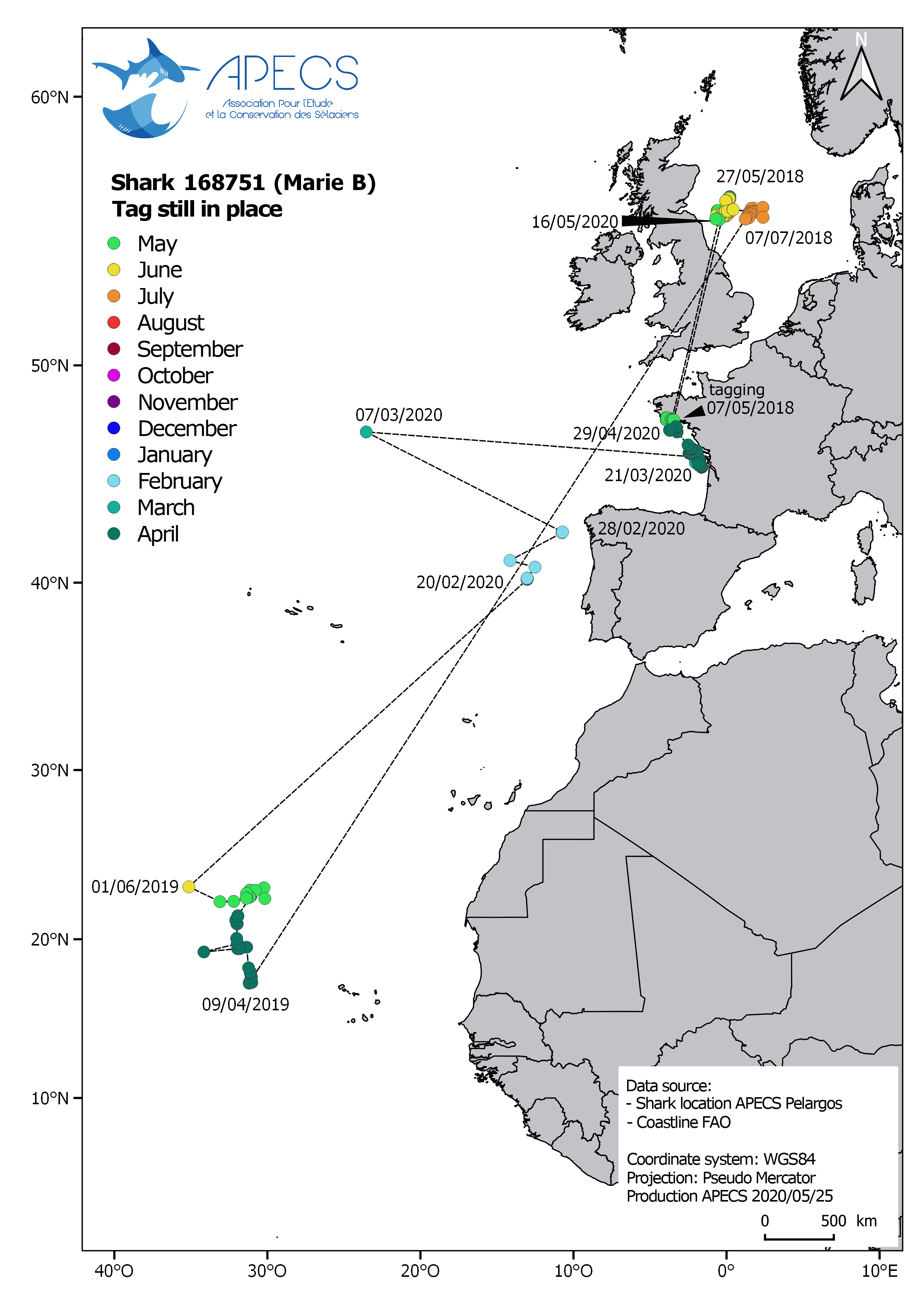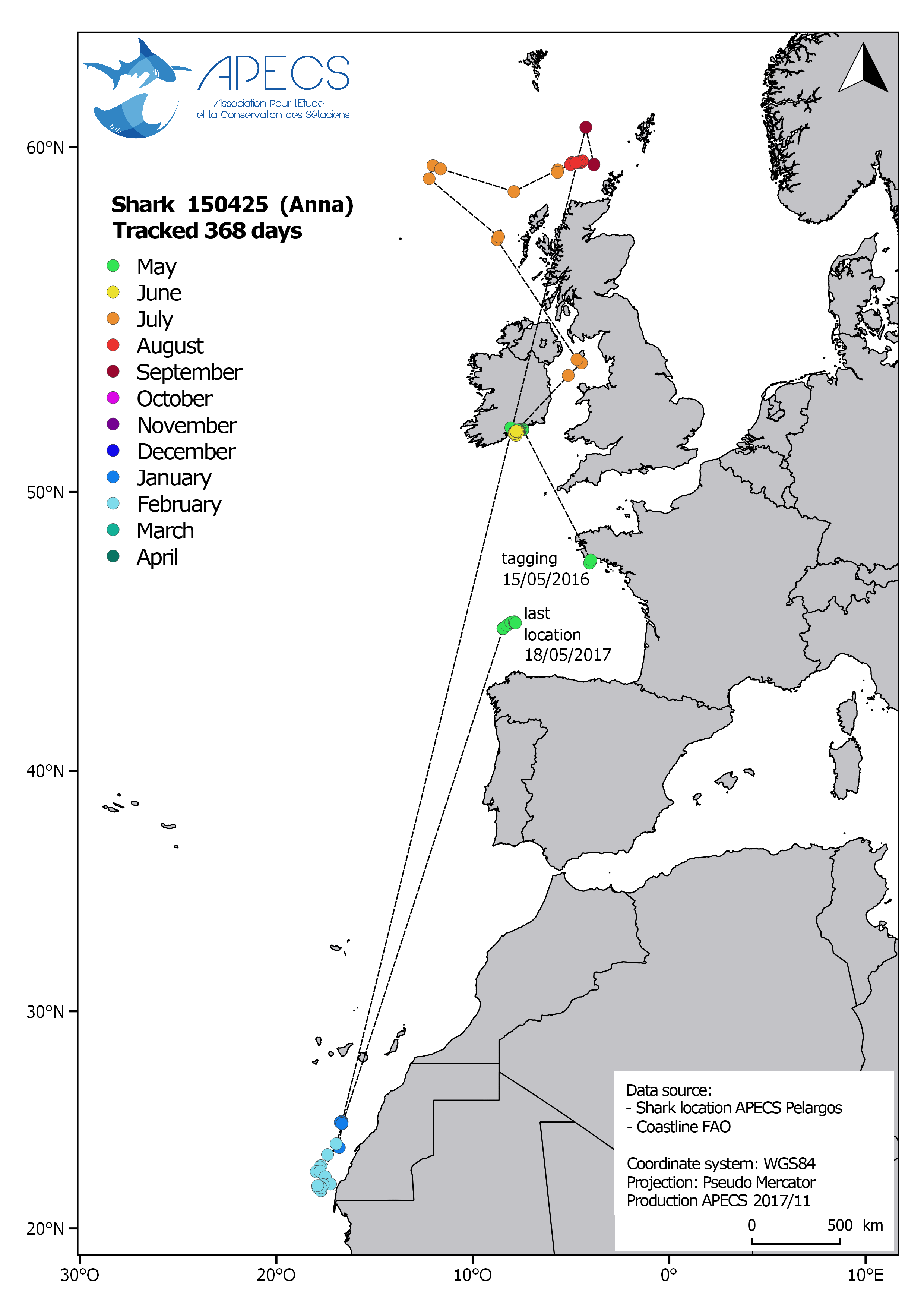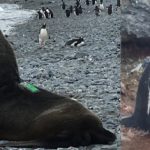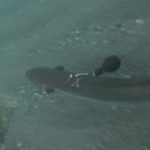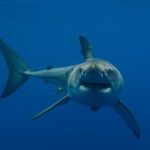← Back
Basking sharks’ long journeys between Brittany and Cape Verde
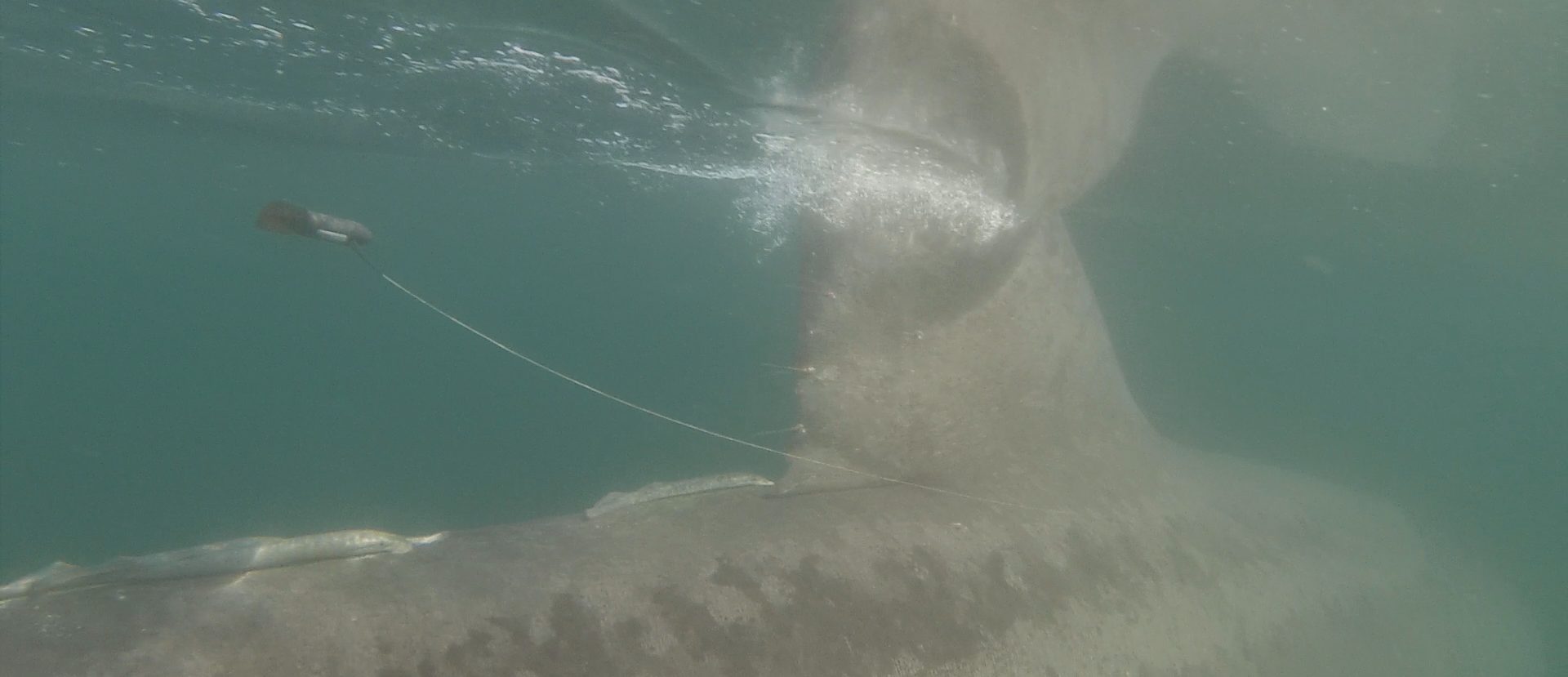
Basking sharks can travel several thousand kilometers in a few months, as was discovered by monitoring their movements with Argos satellite tracking tags. Two basking sharks, in particular, nicknamed Anna and Marie B made impressively long journeys between Brittany and Cape Verde.
The basking shark (Cetorhinus maximus) is the second largest fish in the world after the whale shark (Whale sharks, big friendly giants of the ocean and Whale sharks in Madagascar). When feeding, this shark swims with its mouth wide open and filters the water to extract zooplankton. For a long time fished for its liver oil, it remains threatened (IUCN status “Endangered”) even if it is no longer exploited. Each year, basking sharks are victims of accidental captures or collisions.
Several thousand kilometers in a few months
Basking sharks can be found swimming on the surface, especially in temperate and cold waters. They can travel several thousand kilometers in a few months, and swims back and forth between the bottom and the surface. Argos satellite telemetry has made it possible to know a little more about these voyages and dives, when the sharks are on the surface with conventional transmitters and when they are at depth thanks to archival markings.
Their movements seem to be guided by the search for food. But how they detect it has yet to be discovered.
Monitoring movements with Argos satellite tracking tags
The Association for the Study and Conservation of Selachians (APECS) has been studying basking sharks since its creation. In 1998, it launched a national citizen science program to record observations of these giants. Sea campaigns began in 2002 in Brittany (France) to study the ecology of basking sharks. Since 2009, the association has been monitoring the movements of the sharks by fitting them with Argos satellite tracking tags ( Eric Stéphan and Alexandra Rohr, Learning more about basking sharks with argos ). The first tag used were pop-up archive tags and since 2015, with the launch of the Pelargos program, new transmitters have been deployed (SPOT). They emit the position of the shark when it is on the surface almost in real time. A total of six archival and six SPOT beacons were installed between 2009 and 2020 by APECS on the Britton coast.
More info about marine animals tracking
Marie B impressively long journey
In 2018, in particular, three basking sharks were equipped with transmitters off Brittany, two males and one female. The two males were only tracked until the summer of 2018. The female, nicknamed “Marie B”, has been breaking records since July 2018: after staying a few days in southern Brittany, she continued on her way to the North Sea, an area where no basking shark had ever been tagged before. It then disappeared for nine months before finally reappearing, at the beginning of April 2019, much further south than any other marked shark in the North-East Atlantic, off Cape Verde. It resurfaced again eight months later, off Portugal, before continuing northwards in the southern Bay of Biscay, then along the coast of Brittany and even as far as the North Sea since mid-May!
Marie B had also been fitted with an pop-up archival tag which enabled to track its first year of travel, even under the surface (see Two tags on a shark: a world first ).
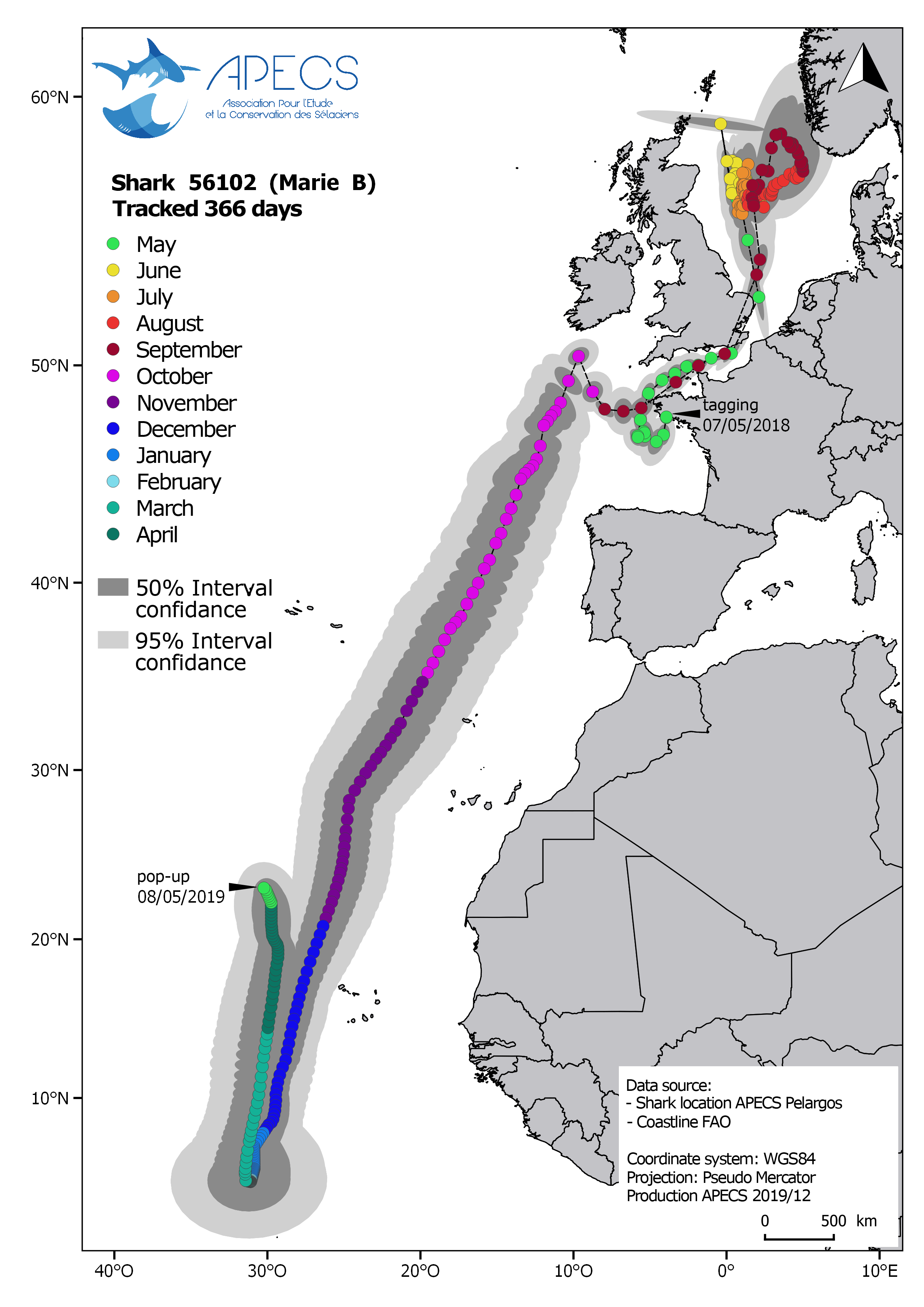 Marie B track from archival pop-up tag (ID 56102) data between 07/05/2018 and 08/05/2019 (Credit APECS)
|
|
Anna between Brittany and Cape Verde
Between 2016 and 2017, another female (nicknamed Anna) had made a similar journey. After she was tagged in Brittany in the spring of 2016, she went north, but this time to the west of the British Isles during the summer. She then spent the autumn at depth and returned to the surface south of the Moroccan coast in February 2017 before continuing on to the Bay of Biscay in the spring, where the tag stopped emitting after 368 days of tracking.
Long Journeys
This monitoring highlights the very long migrations carried out by basking sharks and allows us to discover that they are visiting new areas. Although nearly 150 beacons have been deployed by various research teams in the Northeast Atlantic, these new data show that there are still many unknowns about these sharks. International efforts must continue to solve the mysteries of the basking shark and ensure its preservation.
Photo: Marie B with a tag (© Y. Massey-APECS)

